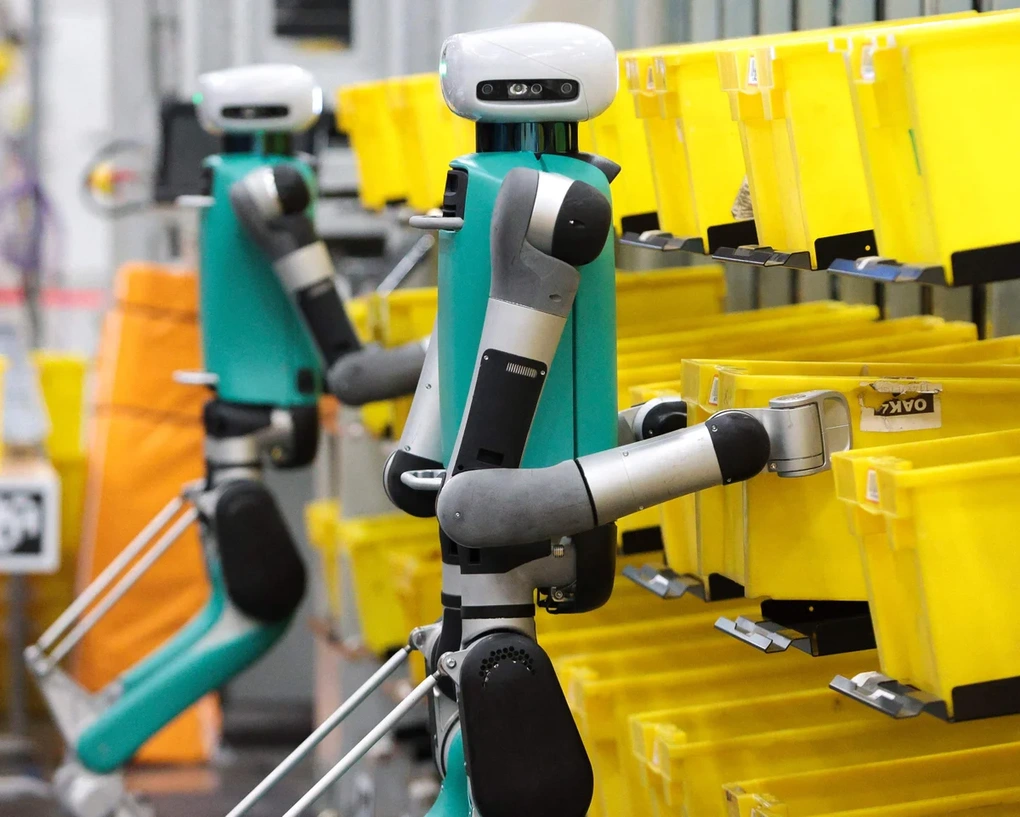From the flying cars in "The Jetsons" to the world of the Matrix, the prospect of a future where technology frees humans from arduous and tedious tasks has always been a source of endless inspiration.
Those children who were once captivated by that vision have now grown up to become engineers and CEOs of leading technology corporations around the world. And they are turning those futuristic dreams into reality.
Amazon, with a market capitalization of $2 trillion, is at the forefront of this revolution, but the question is: Are we going too fast, too far?
Inside Amazon's secret "robot park"
According to a groundbreaking report from the reputable tech news site The Information, Amazon is accelerating progress on one of its most ambitious projects: developing specialized artificial intelligence (AI) software for humanoid robots. The ultimate goal is to create robotic "employees" capable of handling the entire last-mile delivery process, which is the most labor-intensive part of the delivery process.
To realize this plan, Amazon built a special testing ground in San Francisco, described by an insider as a "humanoid robot park." This facility, though only about the size of a small coffee shop, was designed as a complex obstacle course, simulating real-world delivery conditions.
Inside the test site, a Rivian electric delivery van (the type Amazon uses tens of thousands of across the US) was already in place and ready for use.
Here, humanoid robots will be trained to perform complex tasks: moving autonomously inside the vehicle, correctly identifying packages, and most importantly, "jumping" out of the vehicle, approaching the door, and completing deliveries automatically.
This project demonstrates a clear strategy: Amazon develops its own AI software – the robots' brains – while collaborating with partner companies to manufacture the hardware – their bodies. After testing in a controlled environment at its "robot park," the company plans to conduct real-world "field trips," a crucial step in bringing this technology to the world.

Amazon recently purchased 20,000 electric vehicles to equip these robots (Photo: Getty).
The journey of automation is a never-ending process.
This isn't the first time Amazon has sought to replace humans with machines. The tech giant's automation race is a long-term strategy, heavily invested in over a decade, aimed at optimizing operations and shortening delivery times.
In 2013, the world first learned of Amazon's ambitions with the announcement of its drone delivery program. However, after more than 10 years and countless trials and obstacles, this project has yet to take off on a large scale.
In 2023, Amazon partnered with Agility Robotics to test Digit, a humanoid robot designed to work in warehouses. Agility's CEO stated at the time that the goal was to make "the employee work experience safer, easier, and less repetitive." Employees would act as "robot managers," delegating manual labor tasks to machines.
In 2024, Amazon received further authorization in the UK to test drone flight beyond direct human control, a further step demonstrating its commitment to pursuing automated aerial delivery.
The current humanoid delivery robot project is the culmination of this effort. It doesn't just stop at warehouses or in the skies, but targets the final interaction with customers, an area traditionally considered the exclusive domain of humans.
The future of workers is in serious doubt.
While these technological advancements may be good news for investors and consumers seeking faster delivery, they pose an existential threat to the massive workforce in the delivery industry.
If Amazon's experiment is successful, even if a human driver is still needed behind the wheel, robots could significantly speed up deliveries by processing one address while the driver moves on to the next. Furthermore, with Amazon heavily investing in self-driving car technology through its subsidiary Zoox, a future completely devoid of humans in the delivery process is entirely possible.
This scenario could lead to the replacement of thousands, even millions, of delivery workers worldwide, causing a serious employment crisis and raising thorny social questions.
From the laboratory to the sidewalk: A challenging journey.
Despite Amazon's ambitious goals, experts remain cautious about their feasibility in the near future. Professor Subramanian Ramamoorthy, head of machine learning and robotics at the University of Edinburgh, notes that while hardware for humanoid robots is rapidly developing, the biggest challenge remains ensuring stable operation in a chaotic real-world environment.
"If Amazon limits the scope of operations, for example to areas with clearly defined driveways, standard entrance layouts, and surrounding environments, the task would be much simpler," he explained.
However, the reality is far more complex. "When the environment becomes complicated and changeable, such as the sudden appearance of pets or young children running out, or simply an irregularly shaped step, the problem becomes much more difficult."
Achieving stable and absolutely safe performance outside the controlled environment of a "robot park" is a mountain that even Amazon's talented robotics engineering team would take years to conquer.
Amazon has yet to issue an official comment on this information. But what's happening inside the San Francisco testing facility shows one thing for sure: the automation revolution is taking a long and powerful leap forward. Humanoid robots are gradually stepping off the screen. The question for society is no longer "will they come?", but "how will we prepare when they actually come knocking on our door?".
Source: https://dantri.com.vn/kinh-doanh/robot-giao-hang-cua-amazon-dot-pha-cong-nghe-hay-ke-huy-diet-viec-lam-20250606220019599.htm








































































































Comment (0)